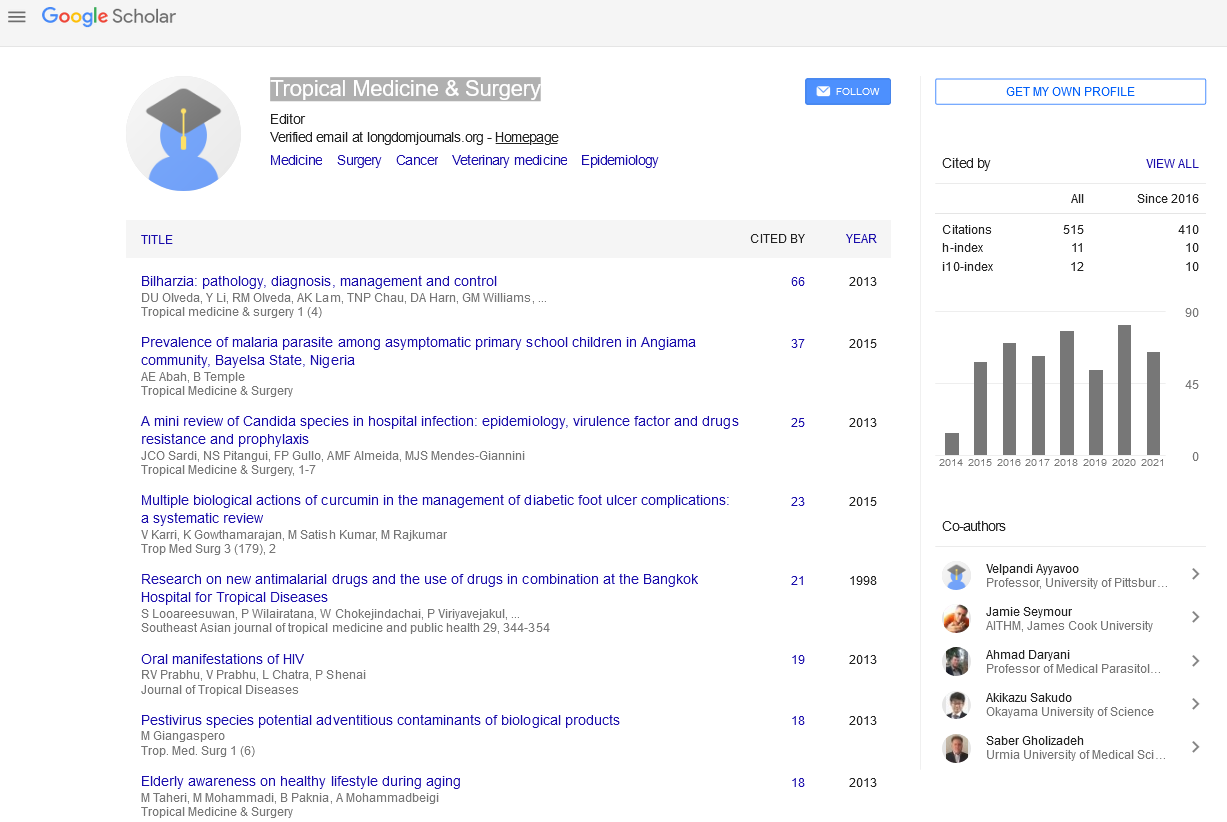PMC/PubMed Indexed Articles
Indexed In
- Open J Gate
- Academic Keys
- RefSeek
- Hamdard University
- EBSCO A-Z
- OCLC- WorldCat
- Publons
- Euro Pub
- Google Scholar
Useful Links
Share This Page
Journal Flyer

Open Access Journals
- Agri and Aquaculture
- Biochemistry
- Bioinformatics & Systems Biology
- Business & Management
- Chemistry
- Clinical Sciences
- Engineering
- Food & Nutrition
- General Science
- Genetics & Molecular Biology
- Immunology & Microbiology
- Medical Sciences
- Neuroscience & Psychology
- Nursing & Health Care
- Pharmaceutical Sciences
Abstract
Postburn Knee Flexions Contractures: Anatomy and Methods of Their Treatment
Viktor M Grishkevich and Vishnevsky AV
Background: Postburn knee flexion contractures cause functional limitations of all lower extremity, not allowing the patient to walk normally, creating serious cosmetic defects, and, therefore, requiring surgical reconstruction. The anatomic features of knee flexion contractures and their treatment have been covered in literature far less than large joints of the upper extremities, and their treatment is still a challenge for many surgeons. Methods: Anatomy of postburn knee flexion contractures in 58 patients was studied and contractures were surgically eliminated by using new approaches and techniques. Follow-up results were observed from 6 months to 12 years. Results: Knee postburn flexion contractures were divided into three anatomic types: edge, medial, and total. Edge contractures were caused by scars located on the lateral or medial knee surface and were characterized by the presence of the fold along the popliteal fossa edge. The lateral sheet of the fold was scarred and k ulcerous scars should be excised. The study is the original research of the 1st level of evidence. Conclusion: Three anatomic types of knee scar flexion contractures were identified: edge, medial, and total. An anatomically justified technique for edge and medial contractures was trapeze-flap plasty. Total and most medial contractures were efficiently eliminated with scar excision and skin grafting; rarely was external distractor needed.

